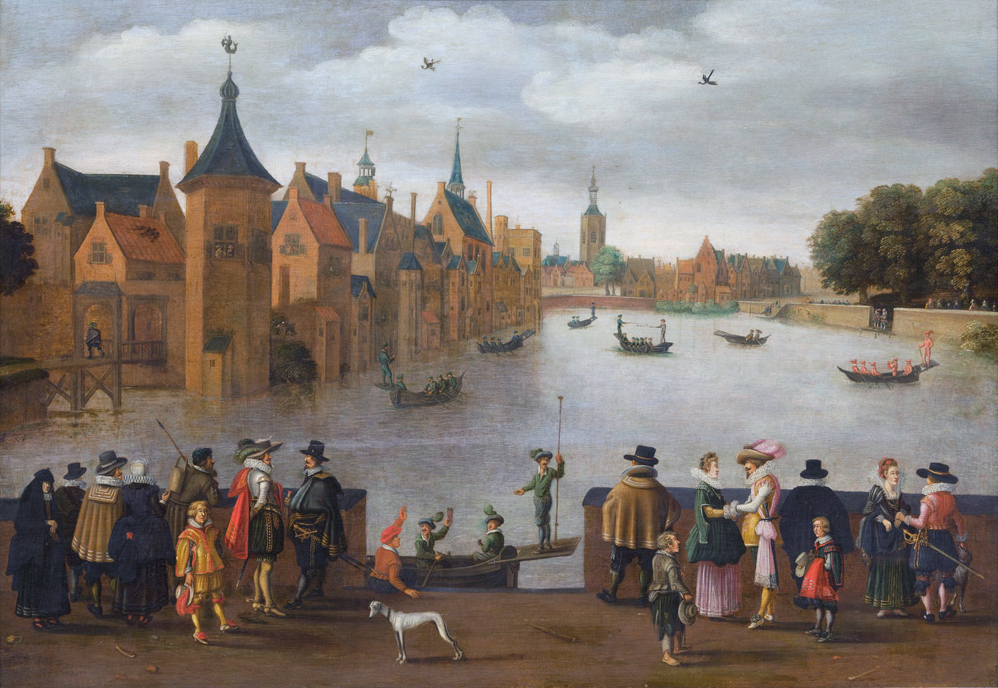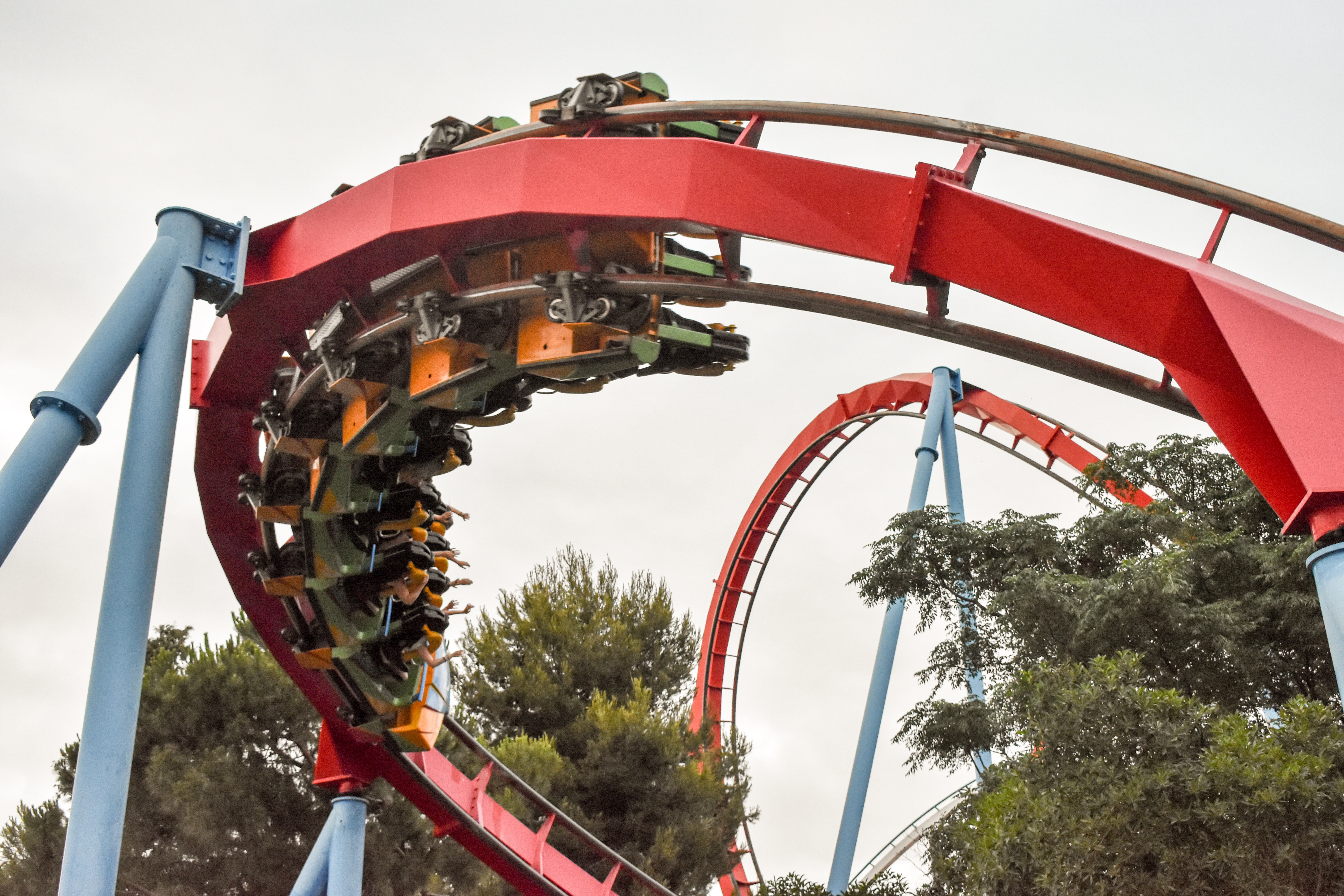|
Formule X
''Formule X'' is a Maurer Söhne X-Car roller coaster at Drievliet amusement park in The Hague, the Netherlands. It opened on April 6, 2007. Formule X was the first X-car coaster to have an LSM launch. Technical information The coaster is tall and long. It contains two never-before-seen inversions and a 135° over-banked turn. There are two trains which can each hold 6 passengers. The LSM launch accelerates from 15 to 70 km/h (6–45 mph) in just 2 seconds. The ride has small dimensions in comparison to other rides: the ride is built on a 50 m × 50 m surface (160 ft × 160 ft). Formule X can handle 650 passengers an hour. Ride experience The ride starts with a right turn exiting the station. Immediately, a launch causes acceleration from to {{convert, 45, mph, abbr=on in 2 seconds, entering an Immelman loop. After this first inversion, the train enters a horseshoe turn, followed by an airtime hill. Next, the train maneuvers through a second i ... [...More Info...] [...Related Items...] OR: [Wikipedia] [Google] [Baidu] |
Maurer Söhne
Maurer AG, formerly known as Maurer Söhne GmbH & Co. KG, is a steel construction company and roller coaster manufacturer. Founded in 1876 in Munich, Germany, the company has built many styles of steel buildings, ranging from bridges, industrial buildings, and even art structures. While known for building a variety of wild mouse coasters, its subsidiary Maurer Rides GmbH has branched out into spinning, looping, and launching coasters. The company also produces a free-fall tower ride. On December 15, 2014, the company changed its name to Maurer AG. Roller coaster work In 1993, Maurer took over the amusement ride division of a fellow German firm, BHS. BHS constructed four Schwarzkopf-designed roller coasters, working with Sansei Yusoki and Zierer in the process. Maurer's first ride was a custom looping roller coaster called Venus GP that opened at Space World in 1996. Since then they have produced almost 50 roller coasters including spinning, launched, racing and wild mouse ... [...More Info...] [...Related Items...] OR: [Wikipedia] [Google] [Baidu] |
Roller Coaster
A roller coaster, or rollercoaster, is a type of amusement ride that employs a form of elevated railroad track designed with tight turns, steep slopes, and sometimes inversions. Passengers ride along the track in open cars, and the rides are often found in amusement parks and theme parks around the world. LaMarcus Adna Thompson obtained one of the first known patents for a roller coaster design in 1885, related to the Switchback Railway that opened a year earlier at Coney Island. The track in a coaster design does not necessarily have to be a complete circuit, as shuttle roller coasters demonstrate. Most roller coasters have multiple cars in which passengers sit and are restrained. Two or more cars hooked together are called a train. Some roller coasters, notably Wild Mouse roller coasters, run with single cars. History The Russian mountain and the Aerial Promenades The oldest roller coasters are believed to have originated from the so-called " Russian Mountains", ... [...More Info...] [...Related Items...] OR: [Wikipedia] [Google] [Baidu] |
The Hague
The Hague ( ; nl, Den Haag or ) is a list of cities in the Netherlands by province, city and municipalities of the Netherlands, municipality of the Netherlands, situated on the west coast facing the North Sea. The Hague is the country's administrative centre and its seat of government, and while the official capital of the Netherlands is Amsterdam, The Hague has been described as the country's de facto capital. The Hague is also the capital of the provinces of the Netherlands, province of South Holland, and the city hosts both the International Court of Justice and the International Criminal Court. With a population of over half a million, it is the third-largest city in the Netherlands, after Amsterdam and Rotterdam. The Hague is the core municipality of the COROP, Greater The Hague urban area, which comprises the city itself and its suburban municipalities, containing over 800,000 people, making it the third-largest urban area in the Netherlands, again after the urban are ... [...More Info...] [...Related Items...] OR: [Wikipedia] [Google] [Baidu] |
Netherlands
) , anthem = ( en, "William of Nassau") , image_map = , map_caption = , subdivision_type = Sovereign state , subdivision_name = Kingdom of the Netherlands , established_title = Before independence , established_date = Spanish Netherlands , established_title2 = Act of Abjuration , established_date2 = 26 July 1581 , established_title3 = Peace of Münster , established_date3 = 30 January 1648 , established_title4 = Kingdom established , established_date4 = 16 March 1815 , established_title5 = Liberation Day (Netherlands), Liberation Day , established_date5 = 5 May 1945 , established_title6 = Charter for the Kingdom of the Netherlands, Kingdom Charter , established_date6 = 15 December 1954 , established_title7 = Dissolution of the Netherlands Antilles, Caribbean reorganisation , established_date7 = 10 October 2010 , official_languages = Dutch language, Dutch , languages_type = Regional languages , languages_sub = yes , languages = , languages2_type = Reco ... [...More Info...] [...Related Items...] OR: [Wikipedia] [Google] [Baidu] |
Linear Synchronous Motor
A linear motor is an electric motor that has had its stator and rotor "unrolled", thus, instead of producing a torque (rotation), it produces a linear force along its length. However, linear motors are not necessarily straight. Characteristically, a linear motor's active section has ends, whereas more conventional motors are arranged as a continuous loop. A typical mode of operation is as a Lorentz-type actuator, in which the applied force is linearly proportional to the current and the magnetic field (\vec F = I \vec L \times \vec B). Linear motors are by far most commonly found in high accuracy engineering applications. It is a thriving field of applied research with dedicated scientific conferences and engineering text books. Many designs have been put forward for linear motors, falling into two major categories, low-acceleration and high-acceleration linear motors. Low-acceleration linear motors are suitable for maglev trains and other ground-based transportation applica ... [...More Info...] [...Related Items...] OR: [Wikipedia] [Google] [Baidu] |
Immelman Loop
This list of roller coaster elements contains the individual parts of roller coaster design and operation. Introduction Roller coaster elements are the individual parts of roller coaster design and operation, such as a track, hill, loop, or turn. Variations in normal track movement that add thrill or excitement to the ride are often called "thrill elements". Common elements Banked turn A banked turn is when the track twists from the horizontal plane into the vertical plane, tipping the train to the side in the direction of the turn. Banking is used to minimize the lateral G-forces on the riders to make the turn more comfortable. When a banked turn continues to create an upward or downward spiral of approximately 360 degrees or more, it becomes a helix. Brake run A brake run on a roller coaster is any section of track meant to slow or stop a roller coaster train. Brake runs may be located anywhere or hidden along the circuit of a coaster and may be designed to bring the train to ... [...More Info...] [...Related Items...] OR: [Wikipedia] [Google] [Baidu] |
Brake Run
A brake run on a roller coaster is any section of track meant to slow or stop a roller coaster train. Brake runs may be located anywhere along the circuit of a coaster and may be designed to bring the train to a complete halt or to simply adjust the train's speed. Contrary to some belief, the vast majority of roller coasters do not have any form of braking on the train itself, but rather forms of braking that exist on track sections. One notable exception is the Scenic Railway roller coaster, which relies on an operator to manually control the speed of the train. On most roller coasters, the brakes are controlled by a computer system. Some older coasters have manually operated friction or skid brakes, some with a pneumatic assist. These are either engaged at the control panel or operated by pulling or pushing large levers in the station. Trim brakes Trim brakes are sections of brakes which are intended to adjust a train's speed during its course rather than bring the train to ... [...More Info...] [...Related Items...] OR: [Wikipedia] [Google] [Baidu] |


